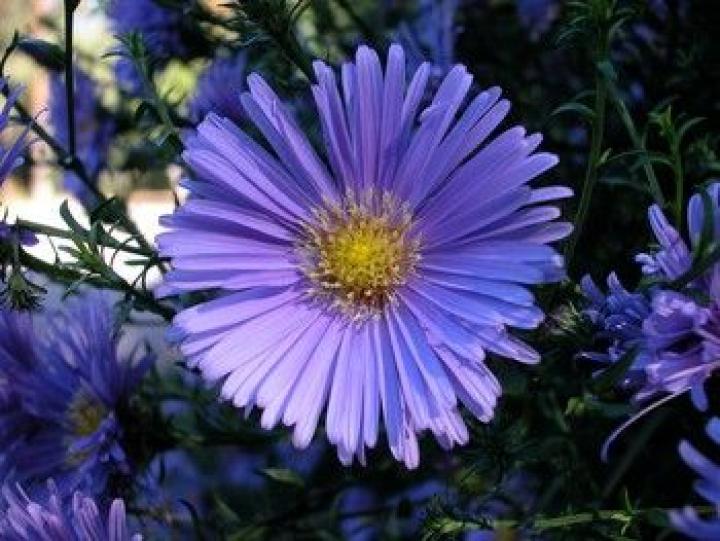
Asters are daisy-like perennials with starry-shaped flower heads. They bring delightful color to the garden in late summer and autumn when many of your other summer blooms may be fading.
The plant’s height ranges from 8 inches to 8 feet, depending on the type. You can find an aster for almost any garden and they have many uses, such as in borders, rock gardens, or wildflower gardens. Asters also attract butterflies to your garden!
Planting
- Asters prefer climates with cool, moist summers, especially cool night temperatures.
- Select a site with full sun to partial sun.
- Soil should be moist, well-drained, and average to humus-rich.
- Plany asters in early- to mid-spring. Fertilize soil prior to planting.
- While the plant can be grown from seed, germination can be uneven. You can start the seeds indoors during the winter by sowing seeds in pots or flats and keeping them in the refrigerator for 4 to 6 weeks. After 4 to 6 weeks, put the seeds in a sunny spot.
- Set seeds one inch deep.
- Many gardeners purchase a potted plant from the nursery.
- Space asters 1 to 3 feet apart, depending on the type.
- Water plants in well. Add mulch after planting to keep soil cool and prevent weeds.If you’re replanting shoots, use vigorous, young shoots to ensure best growth.
Care
- Add a thin layer of compost with a 2–inch layer of mulch around the plants every spring.
- If you receive less than 1 inch of rain a week, remember to water your plants regularly during the summer. However, many asters are moisture-sensitive; if your plants have too much moisture or too little moisture, they will often lose their lower foliage or not flower well. Keep an eye out for any stressed plants and try a different watering method if your plants are losing flowers.
- Stake the tall variesties in order to keep them upright and remember to pinch the young shoots to encourage bushiness.
- Cut asters back in winter after the foliage has died.
- Divide every 2 to 3 years in the spring to maintain your plant’s vigor and flower quality.
Pests/Diseases
- Susceptible to powdery mildew, rusts, white smut, leaf spots, stem cankers, aphids, tarsonemid mites, slugs, snails, and nematodes. Choose disease-resistant varieties.
Recommended Varieties
- King George (Aster amellus), for its large, violet–blue flowers
- Silver spray (Aster cordifolius), for its pink-tinged white flowers
- Nanus (Aster thomsonii), for its star-shaped, lilac–blue flowers
Wit & Wisdom
Asters, one of September’s birth flowers, were once burned to ward off serpents.






